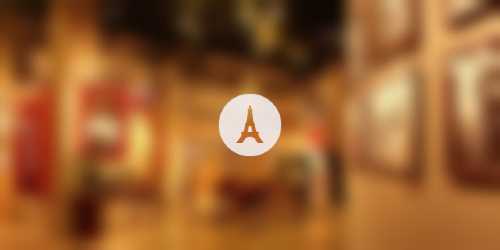Popular Trip Moments
🏯 Walls of Time: A Stroll Through Suwon Hwaseong Fortress | Stone Walls and Serene Whispers: A Rainy Day at Hwaseong Fortress | Deliciously Spicy Brother Spicy Galbi Stew in Ingye-dong | Suwon Manseok Park Outing: A Natural Retreat in the City! | Springtime at Hwaseong Fortress | Recommended Stay in Suwon, South Korea | Gwanggyo Galleria 'Jeong': A Chinese restaurant where classic flavors meet variety. | Starbucks Gwanggyo L-Fort R Store: Capturing the Deep Aroma of Reserve Coffee | 🥖 Alleyway Gwanggyo Bread Restaurant Bakery Mildo | 🐾 Cat Heaven, a cat paradise in Alleyway Gwanggyo | 🎬 Premium movie viewing at Gwanggyo Galleria CGV | Suwon Haenggung-dong Jangangmun View Cafe, Heol Coffee Roasters | 🍴 A table full of ‘Dad’s Jeonbokjang’ with sincerity, Ajang Ajang | 💐 A Summer Afternoon Strolling Along a Path Adorned with Hydrangeas | 🚘 Suwon Doichi Auto World, a place to experience Audi’s sporty charm | Shindong Hydrangea Garden and Cafe Street: A Quiet Night Stroll | 🧘♀️ Bongnyeongsa Temple: A Serene Buddhist Retreat in Suwon | A fun trip to Suwon! Modern yet Korean style 🇰🇷 | A perfect summer destination: Suwon Hwaseong Fortress's Hwahongmun Gate | Gwanggyo Galleria Starbucks: Enjoying the Panoramic View | Moroccan-inspired Cafe 🩷 | 🎨 Warm gaze of the refreshing artist at Gwanggyo Galleria | A Day Out in Gwanggyo: Urban Strolls and Scenic Spots | Walking Above the Lights at Gwanggyo Lake Park | 💐 Alleyway Gwanggyo Flower Shop Ekotugo | 📚 A quiet resting place in Alleyway Gwanggyo, Book Power Plant | 🏡 Alleyway Gwanggyo, a cultural complex for everyone | Gwanggyo Galleria Department Store: A Unique Luxury Spot | Gwanggyo Galleria Luxury Hall: A Destination of Elegance | 🍜 Asian gastronomy tour in Suwon Sindong Cafe Street, Foredi
Recommended Attractions at Popular Destinations
Popular Attractions in Bangkok | Popular Attractions in Manila | Popular Attractions in Tokyo | Popular Attractions in Taipei | Popular Attractions in Hong Kong | Popular Attractions in Seoul | Popular Attractions in Kuala Lumpur | Popular Attractions in Los Angeles | Popular Attractions in Shanghai | Popular Attractions in New York | Popular Attractions in Shenzhen | Popular Attractions in Osaka | Popular Attractions in Singapore | Popular Attractions in London | Popular Attractions in Guangzhou | Popular Attractions in San Francisco | Popular Attractions in Beijing | Popular Attractions in Macau | Popular Attractions in Bali | Popular Attractions in Jakarta | Popular Attractions in Paris | Popular Attractions in Ho Chi Minh City | Popular Attractions in Istanbul | Popular Attractions in Phuket | Popular Attractions in Chicago | Popular Attractions in Seattle | Popular Attractions in Toronto | Popular Attractions in Orlando | Popular Attractions in Cebu | Popular Attractions in Chiang Mai
Popular Restaurants in Suwon
Cocky Pub Ingye | Himalaya Garden | Wooriso Yangpyeong Haejanggook | Yeonpo Galbi | Sem Peure Bene | Grotto | Bonsuwon Galbi | Baekje Samgyetang | Iyeongcheol Raw Duck | Kkang Udong | Banana Table | My Wedding Buffet | Namchon Jjimdak Jjimgalbi | Kabojung Kalbi | Choenae Jip | Uncle Beer Suwon Ingye | Twosome Place Suwon Ingye | Shinla Galbi | Outback Steakhouse Suwon Station | Jangteo Seoleongtang Haejanggook | Jeju Do Pork Charcoal Fire Grilled Pork Belly | Seo Ga and Kuk | Mom's Touch | Sulbing Gyeonggi Suwon Yeongtong | Snow Ice | Umandong Pig's Feet House | Din Tai Fung Lotte Department Store Suwon | Jongjeom Nongwon | Starbucks Suwon ibis | Seoul Pork Back-Bone Stew
Popular Ranked Lists
Top 10 Luxury Hotels near Lafayette | Top 10 Luxury Hotels near Boten | Top 50 Must-Visit Restaurants in Chaozhou | Top 50 Luxury Hotels near Mannheim | Top 50 Must-Visit Restaurants in Taipei | Top 50 Must-Visit Restaurants in London | Popular Best Things to Do in County Clare | Popular Best Things to Do in Emmersdorf an der Donau | Popular Best Things to Do in Dickson | Top 10 Best Things to Do in Estonia | Popular Premium Hotels in Menteng | Popular Premium Hotels in Tottori Prefecture | Popular Luxury Hotels in Bouches-du-Rhone | Popular Best Things to Do in Ipoh | Popular Premium Hotels in Chechen Republic | Top 50 Must-Visit Restaurants in Shenzhen | Popular Premium Hotels in Mameyes II | Popular Best Things to Do in El Dorado County | Top 50 Must-Visit Restaurants in Hangzhou | Top 10 Best Things to Do in Rogaland | Top 50 Must-Visit Restaurants in Milan | Popular Premium Hotels in Pasadena | Top 50 Must-Visit Restaurants in Seoul | Top 50 Must-Visit Restaurants in Sydney | Popular Best Things to Do in Oberau | Top 10 Best Things to Do in Wanaka | Popular Best Things to Do in Mansfield | Popular Premium Hotels in Sin el Fil | Popular Best Things to Do in Mason | Popular Best Things to Do in Esperance
About
Payment Methods
Our Partners
Copyright © 2025 Trip.com Travel Singapore Pte. Ltd. All rights reserved
Site Operator: Trip.com Travel Singapore Pte. Ltd.
Site Operator: Trip.com Travel Singapore Pte. Ltd.






















